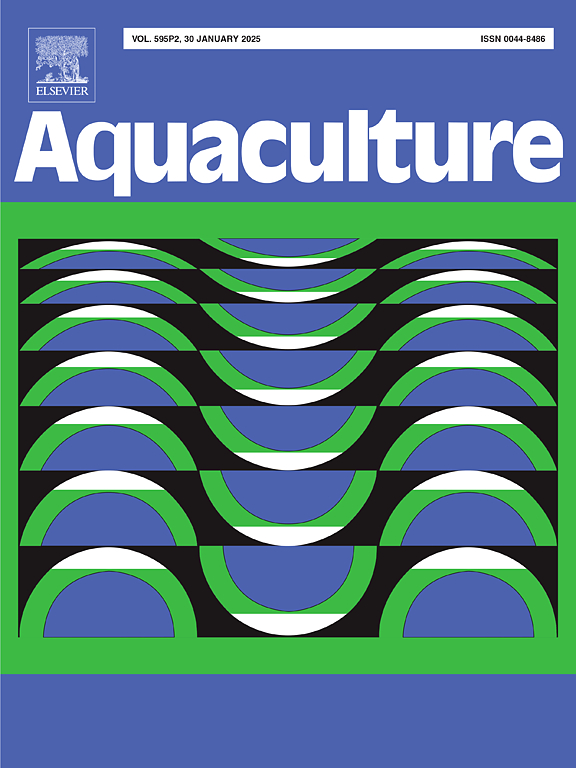DNA damage may cause the reproductive differences between the male tetraploid fish and diploid red crucian carp
IF 3.9
1区 农林科学
Q1 FISHERIES
引用次数: 0
Abstract
Tetraploid fish are valuable diploid sperm donors and vertebrate models, and their reproductive characteristics have been widely attracted. In previous study, we obtained a new tetraploid fish (4nNT, 4n = 200, AAAB) derived from a cross between female autotetraploid fish (4nAU, 4n = 200, AAAA) and male allotetraploid fish (4nAL, 4n = 200, AABB). Compared with the original parent red crucian carp (RCC, 2n = 100, AA), a high proportion of abnormal sperm was observed in the semen of 4nNT. This study was conducted to gain further insight into the reproductive potential and fertility mechanisms of male 4nNT. During meiosis prophase, 100 pairs of bivalents were observed in germ cells of 4nNT, implying a doubling of crossover events in individual spermatocytes. The sperm concentration, motility (MOT), average path velocity (VAP), straight-line velocity (VSL), and curvilinear velocity (VCL) of RCC were significantly higher than 4nNT, and the lifetime was significantly shorter than 4nNT. In the artificial insemination test, higher fertilization and hatching rates were observed in groups using RCC as sperm donors, and higher abnormality rate were observed in groups using 4nNT as sperm donors. Regarding sperm DNA integrity, the higher comet rate was observed in 4nNT sperm, which may contribute to their lower hatching rate and higher abnormality rate. Transcriptome data indicated that the upregulated genes identified in the testis of 4nNT were significantly enriched in 14 signaling pathways, including the homologous recombination, fanconi anemia pathway, p53 signaling pathway and apoptosis, which are link to DNA damage and repair. This indicates the 4nNT spermatocytes may be unable to fully withstand the DNA damage repair pressure caused by the doubling of crossover events. In conclusion, this study suggests that the reproductive differences between 4nNT and RCC may be caused by DNA damage, our findings provide novel insights into the fertility mechanism of male 4nNT, which is of great significance for improving its fertility, population reproduction, and efficient production of triploids.
求助全文
约1分钟内获得全文
求助全文
来源期刊

Aquaculture
农林科学-海洋与淡水生物学
CiteScore
8.60
自引率
17.80%
发文量
1246
审稿时长
56 days
期刊介绍:
Aquaculture is an international journal for the exploration, improvement and management of all freshwater and marine food resources. It publishes novel and innovative research of world-wide interest on farming of aquatic organisms, which includes finfish, mollusks, crustaceans and aquatic plants for human consumption. Research on ornamentals is not a focus of the Journal. Aquaculture only publishes papers with a clear relevance to improving aquaculture practices or a potential application.
 求助内容:
求助内容: 应助结果提醒方式:
应助结果提醒方式:


